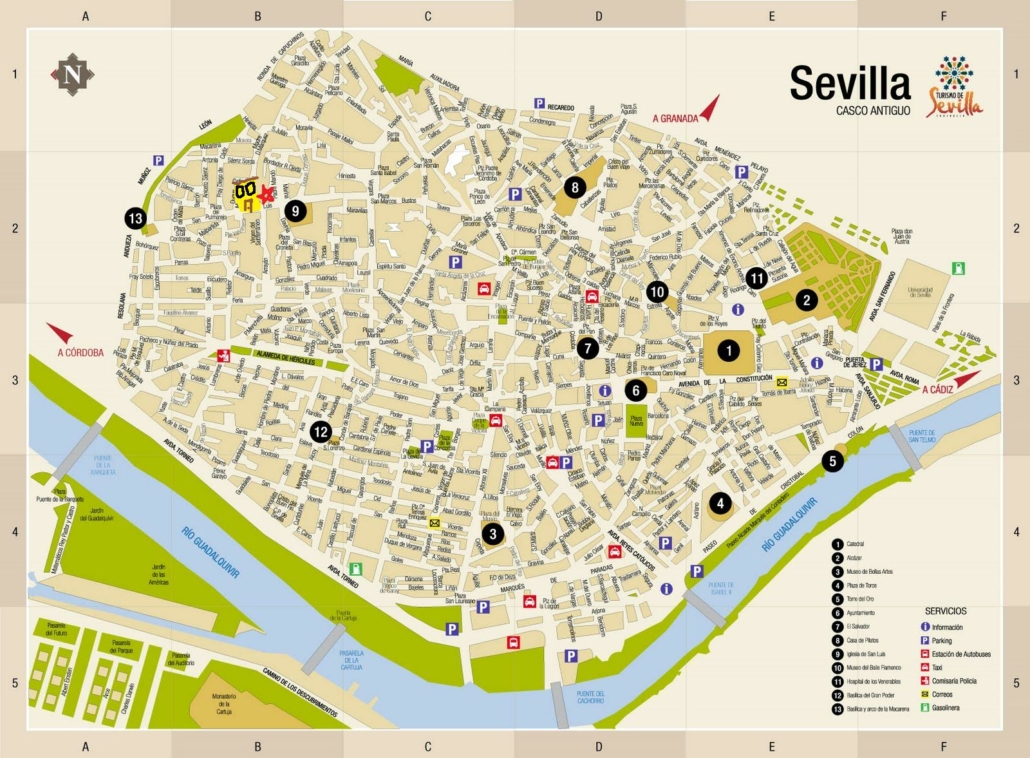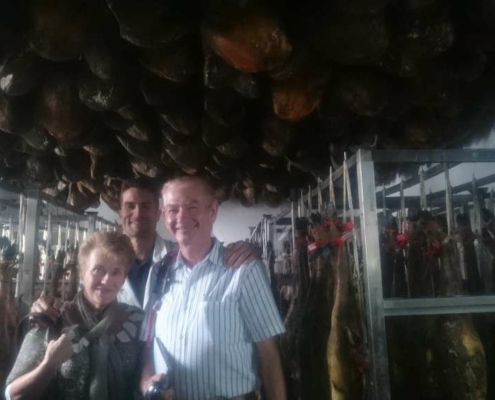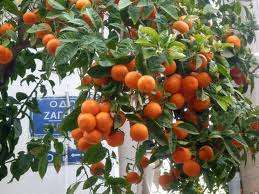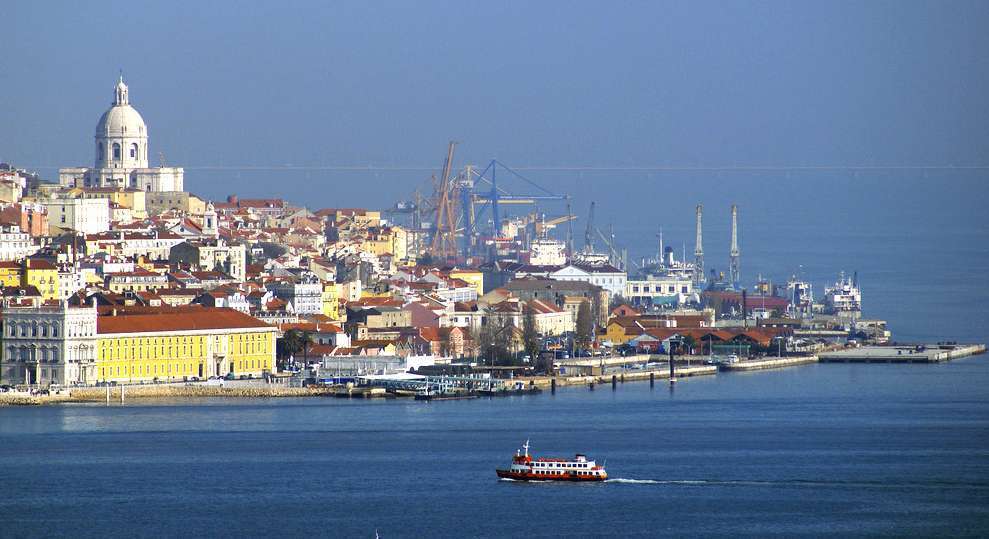Tag Archive for: Seville
We received a wonderful newspaper clipping in the post recently, from one of our lovely Australian guests, and we’d love to share it with you.
The article, published in print as “The Power of the Pig” and on-line as “Extract: My Year Without Meat” by “The Australian” newspaper, includes the powerful Spanish custom of ham, and also talks about a visit to one of our favorite ham producers in Andalusia.
Here’s the website link to the “The Australian” on-line article:
Join us on a Private Food, Wine and Cultural Tour, like our Majestic Madrid and Authentic Andalucia Tour, and you too could be tasting the delicious jamon right at the source!
Wes Albinger and Charles Pierce joined us recently, from New York City, for a fantastic 22 day Customized Private Highlights of Spain Tour. We could tell you where they went, what they saw, where they ate etc but we’ll leave that to them.
Travel with Wes and Charles all over Spain as you read their FULL review in their own words, with no censorship from us – Bon Voyage :-):
After a reflective week or so, we’d like to share a few thoughts about our Gourmand Breaks journey through Spain. Top line: We loved it! It was a pleasure to meet you on that first day in Barcelona. The printed booklet you presented us with was helpful. We referred to it often and having the blank pages did, in fact, inspire us to keep a journal.
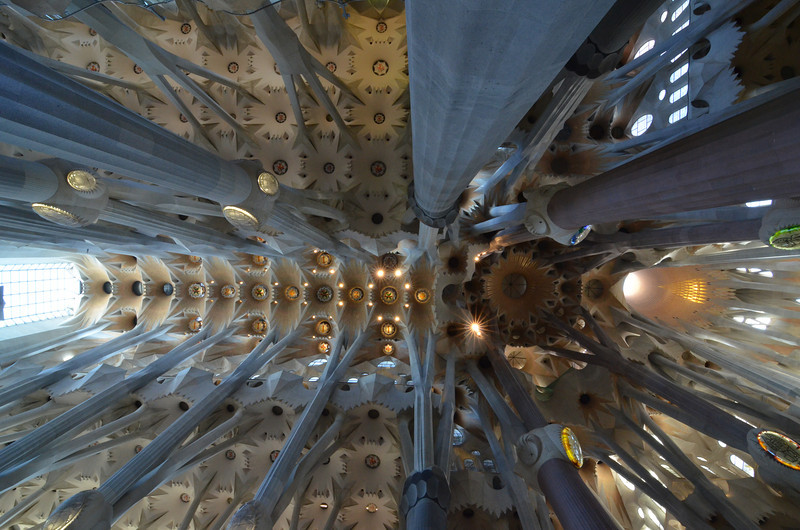
Sagrada Familia, Barcelona
Barcelona was a great place to begin. Our guide gave us a real understanding of Catalonia as well as a wonderful tour of the Sagrada Famillia — the first of many marvels we saw on our trip. It was astounding, enhanced by our guide’s intimate knowledge. Thanks for recommending Ten’s, as it was outstanding. Lasarte was an elegant, comfortable restaurant but frankly, we enjoyed Ten’s more! (A waiter knocked a full glass of wine and a full glass of water over Wes during our meal at Lasarte …it was unfortunate and this may have colored our overall impression of the place. They upgraded our wine after the incident, but otherwise charged us the full amount, which was surprising). As you know, on the last day in Barcelona we suffered food poisoning. Luckily, the malaise didn’t last long. When we got to Grenada, we found a place that served chicken soup and it was curative!
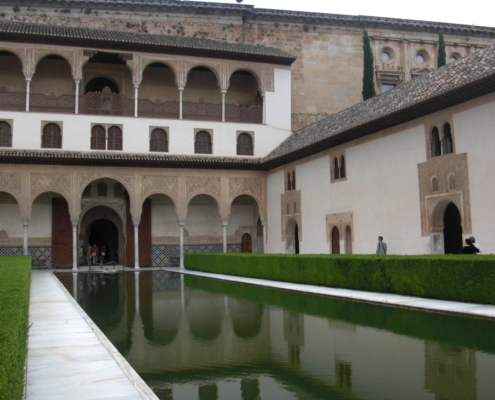
The Alhambra, Granada
Grenada was delightful. Our expert guide maneuvered us gracefully through the crowds and took us on a memorable and knowledgeable tour of the Alhambra — the second marvel of our trip. Your suggested stop in Ronda was the perfect way to break up the drive. We loved the hotel in Seville. Our room was huge and the hotel manager was very attentive, welcoming us with a bottle of bubbly. Our guide, Paloma, was terrific. Her tour of the cathedral was excellent and we had such a good time with her afterwards. We loved the flamenco show and the manager made us feel welcome when he sought us out at the end of the performance to thank us for coming. And, of course, the scent of orange blossoms lingers in our memory. We tried a restaurant suggested in your booklet, Az-Zait, and it turned out to be a good choice. (The Iberian pork dish was delicious!).
Elena, our guide in Cordoba, was very good and clearly at home. Strolling through the old town with her made us feel like locals, as she knew many folks along the way. Her knowledge of the Mezquita was extraordinary and her commentary greatly enhanced our visit to this magnificent sight — the third marvel of our trip. When we told her afterwards that we’d prefer to have a proper lunch rather hopping around for tapas, she picked just the right place. She worked with the waiters to plan us a delectable meal and we were the only tourists in the place. It was great watching local families enjoying a long, leisurely Saturday lunch.
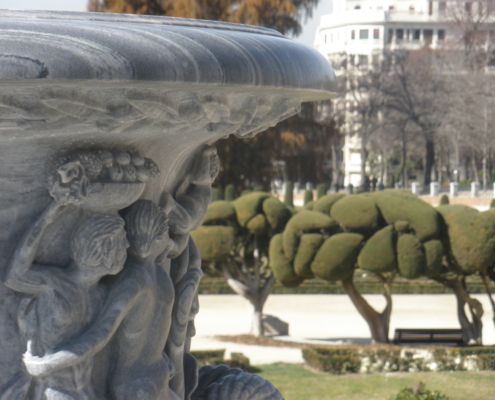
El Retiro Park, Madrid
And then came Madrid. The many neighborhoods, museums, the vitality, Retiro Park and the oh-so-friendly people won us over. The hotel had a few issues…and perhaps not quite as special as the other hotels you chose for our journey but the location was great and the room was generous, quiet and comfortable. The staff was very helpful. Our guide, Olga, used a map to help us understand Madrid and it’s charms before taking us on an informative and comprehensive tour of the city. The Prado art collection was yet another marvel and Olga’s insight was impressive. We loved tapas-hopping with her afterwards and were particularly pleased with the places she picked. She left us feeling very satisfied at the Mercado de San Miguel. We visited the Royal Palace, saw a few other sights and, as Olga had suggested, had something eat in the food courts at El Cortes Inglés for dinner.
The Museo Thysson-Bornemisza museum was yet another marvel. It’s a beautifully curated art collection where we spent hours and loved every minute of it. It was like taking an art history class!
Our two-star dinner at El Club Allard started out with a bang. The first five courses were good but the service was rushed and the final courses lacked finesse. Just the same, it’s a beautiful place and they made us feel quite comfortable.
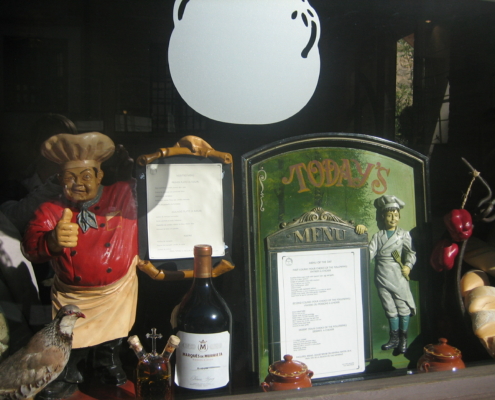
Toledo
We loved our guide in Toledo. His English was excellent and he knew the city so well. (He even spotted, and helped coordinate, the arrest of two pickpockets by sending their photos instantly to the local police!). After our tour, he took us to a small but terrific local restaurant where we had a lunch menu for twelve euros, including a glass of wine!
Segovia was a great side trip, too. We arrived early enough to have a quick visit of the cathedral and to marvel at the Roman aqueduct. After that, we stopped to sample the ponche Segoviano, loving the sponge cake and marzipan confection. We wandered through the old town, visited the Alcázar and even went through a local history museum. But the highlight was lunch at José Maria where we had the famous “cochinillo.” What a treat! The poor piglet couldn’t have been more than six weeks old, just large enough to fit in a roasting pan, and it was fun to watch the waiters use ordinary serving plates to cut the pig into equal portions for serving. We loved it.
Then came San Sebastián. Wow! The train trip was a bit uncomfortable as we noted but San Sebastián was a perfect ending. We loved the hotel and the view from our room was mesmerizing. Once again, our guide was delightful, helping us appreciate the city’s history and taking us to just the right places—a landmark pastry shop, a “grocery store” with the most amazing produce, the Hotel Maria Cristina and all along the waterfront. Then we had a spectacular “pinchos”- hopping jaunt with her that was a lot of fun.
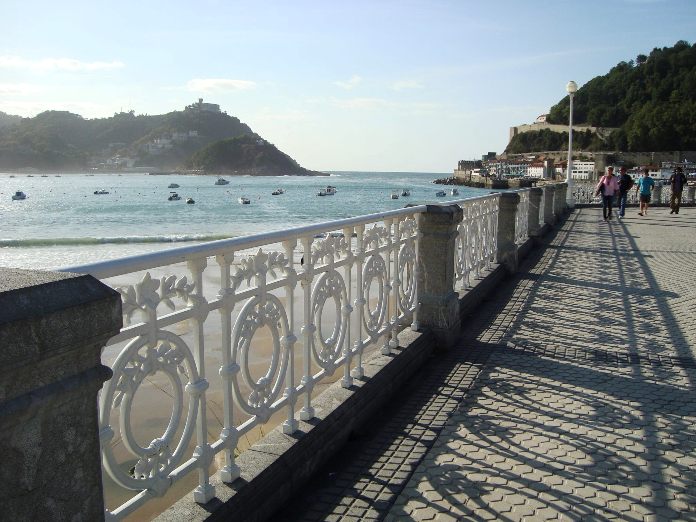
San Sebastian
Bilbao was another memorable day trip. A great driver in his very comfortable car took us to the market downtown and drove us around a bit before dropping us off at the museum. The building is fantastic — another marvel! And thanks again for our lunch at Nerua … one of the best meals we had on the trip. The chef greeted us and gave us a few amuse-gueules while he talked about the kitchen. Then we sat down and ate and drank our way though an excellent 9-course menu. It was delicious! The wine pairing was definitely the right thing to do as the sommelier picked some very interesting wines that perfectly matched the food. (We can’t say enough good things about this place. It was better than both the two-star restaurants in Barcelona and Madrid!). The driver took us back to San Sebastián via the coast, stopping for a few minutes to let us have a look at the port in Getaria. It was a beautiful drive.
We had such a good time with our friends Stephanie and Paul, especially sharing two three-star restaurant meals back-to-back! Our dinner at Akelarre was disappointing. The location can’t be beat (lovely sunset!) and while some of the dishes were playful, innovative and very tasty, there were some clunkers along the way. All in all, it didn’t seem to be a three-star experience. We all came away thinking that it wasn’t worth the exorbitant price.
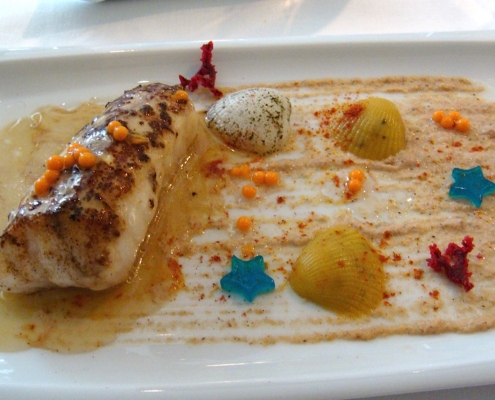
Arzak, Michelin 3*, San Sebastian
On the other hand, lunch at Arzak was one of the best culinary experiences we can remember. From start to finish, it was three-star perfection. Juan Marie Arzak couldn’t have been more charming and the entire staff was super-welcoming. (Thanks to our waiter’s guidance, we were able to order multiple half-portions à la carte, creating our own ten course menu). It was superb and, interestingly, the bill was half as much as our bill at Akelarre!
We have to thank you. From beginning to end, our journey was very well-paced, encompassing and exciting on so many levels. In general, we loved traveling by fast train—and getting a feel for the topography of Spain along the way. The car and driver parts of our journey were top-notch and so comfortable. The guides were spot-on. Thank you for all your efforts on our behalf.
Un abrazo!
Wes and Charles
Thank you Wes and Charles for such a comprehensive insight into your experience with Gourmand Breaks. On behalf of us all at Gourmand Breaks – It was our pleasure to welcome you to Spain!
If you enjoyed your journey with Wes and Charles and would like to experience some great Food, Wine ad Cultural experiences in Spain, and/or Portugal, we’d be delighted to customize your perfect private itinerary. You’ll find many sample itineraries to give you some ideas on our Gourmand Breaks website .
World Heritage Sites are places of importance to cultural or natural heritage as described in The United Nations Educational, Scientific and Cultural Organization, or UNESCO, World Heritage Convention, established in 1972. The aim – to protect and preserve National Heritage.

Spain accepted the convention on May 4, 1982, making its historical sites eligible for inclusion on the World Heritage List.
In 1984 five sites were added to the UNESCO World Heritage List: the Mosque of Córdoba, the Alhambra and the Generalife of Granada, Burgos Cathedral, the Monastery and Site of the Escorial of Madrid and the collective Gaudi works of Park Güell, Palau Güell and Casa Milà in Barcelona.
There are currently 44 World Heritage Sites in Spain listed by the World Heritage Committee on the UNESCO World Heritage List. Spain is the 3rd country with the most World Heritage Sites behind Italy with 49 and China with 45.
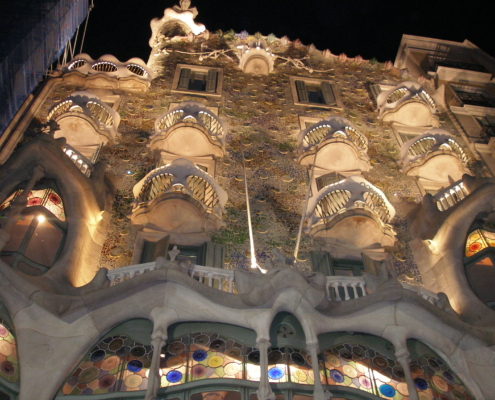
World Heritage Sites in Spain LIST, with their first year of inclusion:
39 Cultural World Heritage Sites in Spain:
• Alhambra, Generalife and Albayzín, Granada (1984)
• Aranjuez Cultural Landscape (2001)
• Archaeological Ensemble of Mérida (1993)
• Archaeological Ensemble of Tárraco (2000)
• Archaeological Site of Atapuerca (2000)
• Burgos Cathedral (1984)
• Catalan Romanesque Churches of the Vall de Boí (2000)
• Cathedral, Alcázar and Archivo de Indias in Seville (1987)
• Cave of Altamira and Paleolithic Cave Art of Northern Spain (1985)
• Cultural Landscape of the Serra de Tramuntana (2011)
• Heritage of Mercury. Almadén and Idrija (2012)
• Historic Centre of Cordoba (1984)
• Historic City of Toledo (1986)
• Historic Walled Town of Cuenca (1996)
• La Lonja de la Seda de Valencia (1996)
• Las Médulas (1997)
• Monastery and Site of the Escurial, Madrid (1984)
• Monuments of Oviedo and the Kingdom of the Asturias (1985)
• Mudejar Architecture of Aragon (1986)
• Old City of Salamanca (1988)
• Old Town of Ávila with its Extra-Muros Churches (1985)
• Old Town of Cáceres (1986)
• Old Town of Segovia and its Aqueduct (1985)
• Palau de la Música Catalana and Hospital de Sant Pau, Barcelona (1997)
• Palmeral of Elche (2000)
• Poblet Monastery (1991)
• Prehistoric Rock Art Sites in the Côa Valley and Siega Verde (1998)
• Renaissance Monumental Ensembles of Úbeda and Baeza (2003)
• Rock Art of the Mediterranean Basin on the Iberian Peninsula (1998)
• Roman Walls of Lugo (2000)
• Routes of Santiago de Compostela: Camino Francés and Routes of Northern Spain (1993)
• Royal Monastery of Santa María de Guadalupe (1993)
• San Cristóbal de La Laguna (1999)
• San Millán Yuso and Suso Monasteries (1997)
• Santiago de Compostela (Old Town) (1985)
• Tower of Hercules (2009)
• University and Historic Precinct of Alcalá de Henares (1998)
• Vizcaya Bridge (2006)
• Works of Antoni Gaudí (1984) Seven properties built by the architect Antoni Gaudí 1852–1926: Parque Güell; Palacio Güell; Casa Mila; Casa Vicens; Gaudí’s work on the Nativity façade and Crypt of La Sagrada Familia; Casa Batlló; Crypt in Colonia Güell.
3 Natural World Heritage Sites in Spain:
• Doñana National Park (1994)
• Garajonay National Park (1986)
• Teide National Park (2007)
2 Mixed World Heritage Sites in Spain:
• Ibiza, Biodiversity and Culture (1999)
• Pyrénées – Mont Perdu (1997)
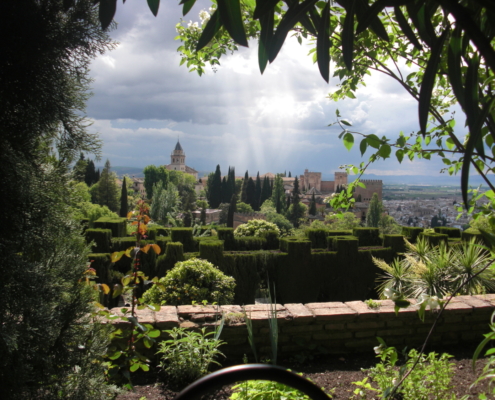
Visit Spain’s World Heritage gems on one of our Private Culture, Food and Wine Tours to see the wonderful historic treasures and fascinating culture of this country and taste fine wine, local foods and much, much more!
Gastronomy in Andalusia is very location-specific – everyone knows that the best strawberries and jamon come from Huelva; sardines from Malaga; tuna from Barbate; mangoes from Granada; cucumbers and tomatoes from Almeria…..
Andalusia is the largest agricultural producer in Spain. It leads the national production of table olives and the world’s largest producer of olive oil. Jaen will say that they make the best olive oil, although in Cordoba, Granada and Seville they will dispute this.

Similar to Spanish wine, Spanish Olive Oils have strict standards and seals provided by the different “Denominaciones de Origen”, Designation of Origin, to ensure their unique taste and high quality. The richness and variety of Andalusian oils is reflected in the recognition of 12 Protected Designation of Origin “PDO” areas, each with its own characteristics.The ratio by province is as follows: Cádiz, (Sierra de Cádiz PDO); Córdoba (Baena PDO; Montoro-Adamuz PDO; Priego de Córdoba PDO and Aceite de Lucena PDO); Granada (Poniente de Granada PDO and Montes de Granada PDO); Jaén (Sierra de Cazorla PDO; Sierra Mágina PDO and Sierra de Segura PDO); Málaga (Antequera PDO); and Seville (Estepa PDO).
Greenhouse cultivation predominates in Almería, producing noteworthy amounts of vegetables. Huelva and Granada are leaders in fruit production, cultivating strawberries and tropical fruit respectively.
Pigs are bred primarily in the mountains of Cádiz, Córdoba, Huelva, Málaga and Seville, where large herds of Ibérico pigs are raised.
Fishing is a chief industry in Cádiz, Huelva and Málaga, where fishermen specialise in catching tuna, prawns and sardines. The Andalusian fishing fleet consists of over 1,575 vessels and the captures reach 41,528 tons per year (2013).
Wine production is centered in the regions around Jerez (the area with the oldest and longest wine exporting tradition in Spain), Montilla-Moriles, Málaga and Huelva.
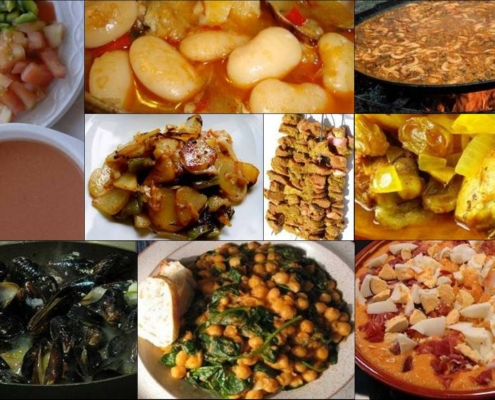
Andalusian gastronomy has deep roots within the Arabic cuisine of Al-Andalus (711-1492). Its refinement, unknown in Europe, transformed a wide range of customs. It was the andalusíes themselves who invented the dining room and the current order in which we eat dishes during a meal.
Gazpacho (a cold soup made of tomato, bread, onions, peppers, cucumbers, garlic, oil, vinegar and salt) is the typical Andalusian dish par excellence.
Tapas (small cold or hot dishes served in bars as aperitifs) attain their maximum expression in Andalusia (Cádiz, Málaga, Jerez…), where they are always served along with a glass of wine or beer.
Tapas hopping is part of Andalusian life and Seville, for example, boasts around 4,000 tapas bars – roughly 1 for every 200 locals so you know they know what they’re talking about! Plate after plate of hot and cold food comes freshly out of the kitchen to appear on the bar to tempt your palate. Try cold roasted pepper salad or anchovies in vinegar, a hot dish of meatballs in sauce or a slice of Potato Omelet ….. the choice is yours. Of course, as is customary, accompany your mouth watering bites with a glass of dry Spanish Sherry, wine or draft beer.
Traditional Andalusian desserts are characterized by clear Arabic influence, like torta real de Motril, tocinos de cielo de Guadix, torrijas de Semana Santa or piononos de Santa Fe, exquisite sweet fillings cream. Other desserts collect a long tradition of Andalusian cuisine convents, which is reflected in the famous St. Ursula yolks.
Here are just some of the typical Andalusian dishes you may like to try while you’re staying in Andalusia:
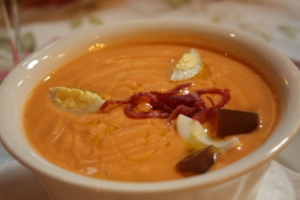
Salmorejo – a thicker version of Gazpacho, from Cordoba, normally served with chopped boiled egg and jamon.
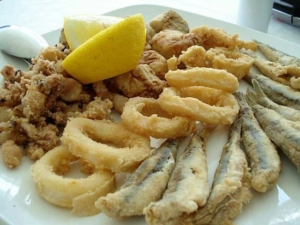
Pescaito Frito – a mix of fried fish, normally including calamares (squid), adobo (marinated dogfish), merluza (hake) and puntillitas (baby octopus).
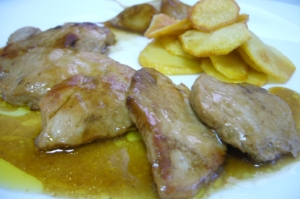
Solomillo al Whisky – Pork fillets cooked in whisky.
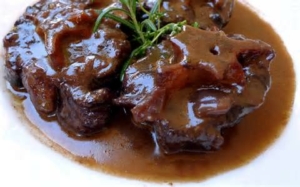
Rabo de toro – bull’s tail stew – traditionally eaten after bullfights, using that day’s toros.
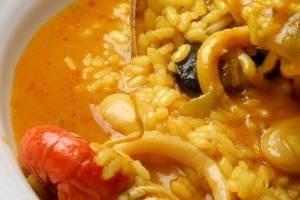
Arroz marinero – a succelent seafood rice, cooked in a cazuela (pot) usually including almejas (clams), mejillones (mussels) and shrimp (gambas).
Join us on a personalized private tour of Spain, like the Majestic Madrid and Authentic Andalusia Tour, to experience the sights and delights of Andalusia in Southern Spain with the orange scented patios of Seville, Romantic Ronda, Grand Granada and Curios Cordoba!
We recently welcomed Michael and Marilyn Mufson to Spain on a fantastic Spanish Food, Wine and Cultural Tour to celebrate their 40 years of marriage!!!! Congratulations to a fantastic couple!

After their intense, yet fulfilling, 14 day vacation, Marilyn and Michael took the time to write to say thank you, and here are their words to us:
“This is a thank you note, and love letter, to Gourmand Breaks for designing the 40th anniversary trip of our dreams. Our expectations were very high, but Madrid and Andalusia, and your caring attention to detail, exceeded them! It was as close to a perfect vacation as we’ve ever had together, and we’re talking 40 years!
First of all, we loved our guides – Olga, in Madrid: In addition to expertly guiding us through the magnificent El Prado Museum, she introduced us to sizzling prawns in garlic at Cervantes, which became our favorite tapas place! Paloma, in Seville, guided us through Bario Santa Cruz, and the Reales Alcazares. We easily fell in love with Seville. In Cordoba, we were introduced to Maria Jose, whose passion for her city and its history was infectious. We spent 5 1/2 hours with Maria. Obviously, we hated to say goodbye.
While in Seville, Gourmand Breaks arranged for us to see a thrilling Flamenco show. The dancers, musicians and singers were truly artists. Not to be missed!
We loved all the hotels Gourmand Breaks selected for us. My favorite was in Granada. The room was stunning, but best of all was the lovely, private patio. Our first night, someone rang our bell at about 11. Enter a lovely young woman carrying a tray of delicious fruit. As if we weren’t already charmed out of our minds! Downstairs, next to the restaurant, was a beautiful courtyard where we enjoyed relaxing and people watching. We ordered simple appetizers but out of the blue were treated to a five course feast straight from heaven. The best paella we’ve ever tasted, served with such panache! The wait staff were heavenly, too.
And then there was the patio/balcony in Ronda with a magnificent view of the white houses on the cliffs on the other side of the gorge. Breathtaking! And in Seville, the courtyard outside of our room where we spent enchanted evenings lounging on couches, dining on tapas and inhaling the scent of orange trees.
In addition to our superb hotel meal in Granada, our favorite restaurants (suggested by Gourmand), were Viridiana and Alabaster, both in Madrid, both unforgettable.
As a special treat, Gourmand arranged for us to see an opera, Pagliacci, at Teatro Zarzuela, upon our return to Madrid. Not only were the lead performers exceptional, the staging was outstanding, with circus performers such as jugglers and a man on stilts, all in colorful costumes. Fortunately, a small screen at the top of the proscenium provided English translations!
It was great fun to be in an audience of local people, many of whom had brought their children along. I’ve never been an opera buff, but this trip may have converted me!
We will be talking about our Spain trip for years to come, and plan to do it again with our grown children and their families! We eagerly look forward to another brilliant vacation with Gourmand Breaks.”
Michael and Marilyn, thank you so much for your kind words! It was our pleasure to help organize your special vacation and we look forward to welcoming you again, maybe for anniversary number 41?

Marilyn Mufson was born in Los Angeles and grew up in Las Vegas, where Bugsy Siegel bounced her on his knee and gave her silver dollars for her piggy bank. A writer and actress, Marilyn has performed serious theater and she wrote and directed the show TIME PLAY. She has written extensively for print and theater and Neon Dreams, her debut full novel, was first published in 2010.
Michael and Marilyn started their 14 day private tour in Madrid then (by high speed train or chauffeur) traveled to Seville, Ronda, Granada and Cordoba, before returning to Madrid with a day out in Toledo. Follow their footsteps to experience the culture, cuisine, heritage and monuments of all these fascinating places on a private tour such as our Majestic Madrid and Authentic Andalucia Private Tour.
Seville Orange Marmalade is considered the finest type of marmalade, not only in Great Britain but worldwide! There is a saying that Sevillanos are so amazed that the British actually want to use their bitter oranges to make marmalade that they reckon the pith is secretly used to make gunpowder!

Seville’s orange scented patios and courtyards are thanks to the tens of thousands of orange trees apparent in this Andalucian city. But, it’s better to not bite into one, when you visit Seville, as you will see how bitter they really are and why these oranges are not destined for the fruit bowl on the kitchen table!
Ingredients for Seville Orange Marmalade recipe:
1 dozen oranges
2 lemons
2 liters of water
2-3 kilos of sugar (or to taste)
6 jars
Method for Seville Orange Marmalade recipe:
Wash the fruit, cut in half, scoop out the pulp and set the skins aside.
Put the pulp in a pan and add 1/3 of the water.
Finely slice the fruit skins, put in another pan and add the remaining water.Boil both pans for one hour then leave to cool.
Once cooled, stretch cheesecloth over the pot with the boiled pulp and drain for 2 to 3 hours. Remove the cheesecloth, discard the pulp and let the remains stand overnight.
Next day, combine the two mixtures (the drained pulp and the sliced skins), boil and add the sugar. Stir constantly and add a dash of salt, if you like. Cook the mixture until it is thick enough, ladle into the sterilized jars and seal immediately.
NOTE: To sterilize the jars – Wash the jars in hot, soapy water, rinse and then sterilize in the oven at 140C for half an hour before filling.
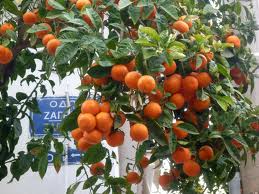
Join us on a personalized private tour of Spain, like the Majestic Madrid and Authentic Andalusia Tour, to experience the sights and delights of Southern Spain with the orange scented patios of Seville, Romantic Ronda, Grand Granada and Curios Cordoba!
The difference between a Pintxo and a Tapa is complicated and depends largely on context and location in Spain. Which came first – the Pintxo or the Tapa? Did Pintxos originate in the Basque Country or were Tapas invented in Andalucia and then perfected in San Sebastian? The origin of these great Spanish bites is a little hazy, but what IS known is that all over Spain Pintxos and Tapas are a way of life, Spanish culture at it’s very best!
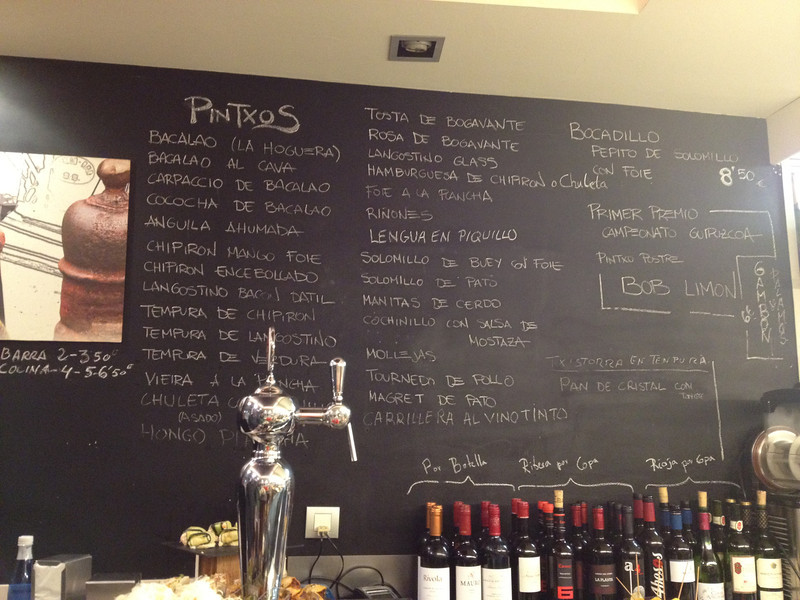
‘Pintxo’ is the Basque word for the Spanish ‘Pincho’, which itself comes from the verb ‘Pinchar’, which means to pierce. Pinchos are traditionally pierced with a cocktail stick, to attach the ingredients to the piece of bread they sit on. However, as Basque cuisine has evolved, the food is now less likely to be pierced to a piece of bread than before. Each bar is bursting with many different varieties and Spanish tradition suggests to have one or two pinchos with a glass, or two, of the best local Txakoli wine in one bar and move on to the next. You can find places that serve up to 100 different pintxos at a time. They can be warm or cold, salty or sweet, and traditionally many pintxos come with seafood and goats cheese, although you will find a many combinations such as Tortilla de Patatas, eggs with tuna, croquets and even mini hamburgers.
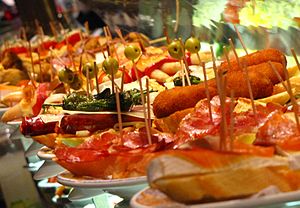
Pintxo etiquette, basically, is that you grab your plate and start loading onto it whatever tickles your taste-buds; it can be difficult because normally they all look so good and you want to try everything. When you’re full and just can’t manage one more bite the waiter will come to count the toothpicks that are left on your plate. The most common rule is that you pay per toothpick and because of this there is usually a standard price on all pintxos, no matter what they may contain.
Away from the Basque Country, you will find ‘Tapas’ the plural form of ‘Tapa’ which itself comes from the verb ‘Tapar’ meaning to cover. In Barcelona, and Catalonia, you will however see the word ‘Tapes’ which is the Catalan equivalent for the Spanish ‘Tapas’.
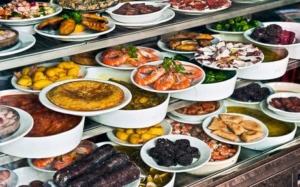
In the old days Andalusian tavern dwellers used a small plate of food to cover their sherry from the fruit flies between sips, hence the connection with the verb ‘Tapar’. Today, tapas hopping is part of Andalusian life and in Seville, for example, there are more than 4,000 tapas bars – roughly 1 for every 200 locals so you know they know what they’re talking about! In the many foodie hot-spots you can try a variety of dishes that come freshly out of the kitchen. Plate after plate of hot and cold food appears on the bar to tempt your palate, so maybe try cold roasted pepper salad or anchovies in vinegar, a hot dish of meatballs in sauce or a slice of Potato Omelet. In many cities in Spain, particularly Madrid and Barcelona, a large portion of, say, calamares, will be called a ‘ración’ and a quarter-size portion a ‘tapa’.
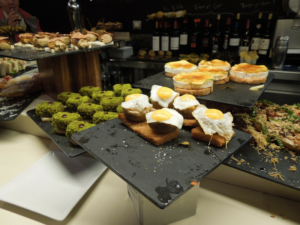
‘Pintxo’ or ‘Tapa’ ? Oh! and, free or not free? These are the questions!
In the Basque Country, you are served ‘Pintxos’. It is never written ‘Pinchos’ and they are never called ‘Tapas’. Whether it is served pierced to a piece of bread with a cocktail stick or not (a plate of risotto is still a pintxo) you will always pay for your pintxo.
In Salamanca you are served ‘Pinchos’. They are usually a piece of meat served on a piece of bread. Though not actually pierced with a stick, this is still close to the original idea of what a ‘Pincho’ is. You will be served a pincho free of charge, to accompany your drink.
In Granada and Leon (and in some other nearby cities) as well as in some bars in Madrid, a small portion, whether served on bread or not, is a ‘Tapa’. It is free, when served with your drink.
In Seville and parts of Andalusia, all small portions are called ‘Tapas’ and in Barcelona and Catalonia ‘Tapes’. They are not free.
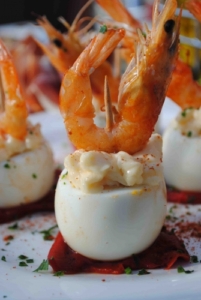
Join the popular Spanish Tapas Hopping Culture on one of our Private Food and Wine Tours where you can hit the Foodie Hot-Spots in Madrid, San Sebastian, Seville or Barcelona with our local Officially Licensed Guides.

As temperatures rise out of single numbers, at last, jackets, scarves and hats can be discarded because the flowers are blossoming, shoots are appearing and the smell of cut grass fills the air. Cold air is being substituted for an air that has a fresh warm smell – Spring is coming! Daylight Saving Time is upon us once again and this means longer days. Spain, Portugal, France and the UK, among others, will be putting their clocks forward on March 30th at 2am!!

We all love Spring, a chance to shed our layers and open our wings. Our eyes open as we look up rather than down. People are happy, anticipating the Summer, so gardens get tidied and houses get painted. We feel the need to get out and about under blue skies and discover new places. Why all the excitement?
Night falls early in Winter, giving the impression that there’s not enough hours in the day and so we crave more daylight. Since the shortest day of the year, back in December, the days have slowly been getting longer, but it’s not enough, and they need a bit of help! Don’t forget, day light saving time starts (has started already or ends depending where you are!) at the end of this month (or not), as most of Europe anxiously awaits “Summer Time!” An hour of sleep is lost when the clocks go forward, but daylight saving time arrives with the promise of an extra hour of evening light for months ahead. On the other side of the World (and in parts of the southern hemisphere) the situation is reserved, as Australia, for example, leaves Summer time and heads into Winter time, thus turning the clocks back. Something the rest of us will not be doing until well after Summer.
Still confused about if the clocks go forwards or backwards?
Most people use the mnemonic “spring forwards, fall backwards” to know what to do with their clocks. In Spring they “spring” forward and in Fall (Autumn) they “fall” back.
 Clocks in The United States and Canada sprang forward already, on the 9th of March at 02.00h (until the 2nd of November 2014, when they fall back again)
Clocks in The United States and Canada sprang forward already, on the 9th of March at 02.00h (until the 2nd of November 2014, when they fall back again)
Clocks in Spain and France spring forward on the 30th of March at 02.00h (until the 26th of October 2014, when they fall back again)
Clocks in the UK and Portugal spring forward on the 30th of March at 01.00h (until the 26th of October 2014, when they fall back again)
Clocks in Australia will fall back on the 6th of April 2014 at 03.00h (until the 5th of October 2014, when they spring forward again)
Spring is a fantastic time to discover Spain, as well as Portugal and SW France. Although all year round destinations, Spring is an attractive time offering bearable temperatures, blue skies, flowering gardens, vineyards bursting with new shoots and relaxing bar and restaurant terraces to watch the world go by. The air is clear and life seems lighter, it’s a great time to be outside! But, if you’re in Spain, don’t forget to put your clocks forward on the 30th of March at 2am to take advantage of those longer afternoons and lighter nights!
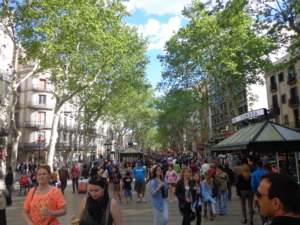
Amble along the streets of bustling Barcelona where the locals will still be hurrying along to work, meetings or lunch. You, however, can take the time to appreciate the Sagrada Família, La Pedrera or the Plaza Real, people watch on the Rambla, stroll along the Barceloneta or take in the views from Montjuic mountain or Antoni Gaudí’s Parc Güell. Barcelona has something for every taste: Chic Shopping to Artisan Boutiques, Nouvelle Cuisine to Tasty Tapas, Magnificent Monuments to Arty Meccas.
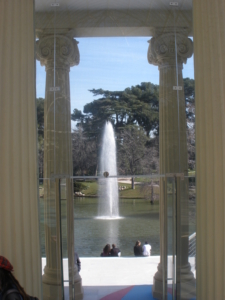
Visit majestic Madrid with its ornate rooftops, regal Palacio Real or sit and watch the world go by in the terrace filled squares of Santa Ana and Plaza Mayor. Retiro Park is a great place to enjoy the open air as you stroll along the paths, of this once royal garden, passing fountains, statues, the delicate Palacio de Cristal, the boating lake and maybe the odd street entertainer or art exhibition. Should you experience an infrequent Spring shower there’s plenty to visit indoors, like the Prado Museum (the biggest art gallery in the World), the Reina Sofia and the Thyssen-Bornemisza Museums or marvel at the interesting interior of the Palacio Real. Our Officially Licensed Bi-Lingual Guide is additionally qualified in Spanish History and Art so a private tour of the museums is a must for any art buff to beat the queues and to make sure you miss nothing!
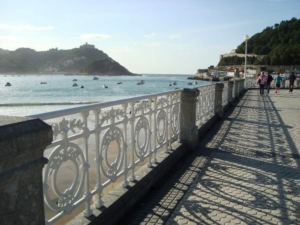
Follow the scallop-shaped seafront of San Sebastian as you stroll along the promenade of La Concha bay to the bustling and colorful port at the end and then continue on the path that almost circles Monte Urgell hill. For some fantastic views over the bay, and the town, climb to the top of the hill, now a public park, where at the summit stands a castle, and, it’s not Rio de Janeiro but, there’s also a big statue of Christ. San Sebastian is also famed for its gastronomy so why not hit the foodie hotspots, as the locals do, for a “pintxo” and a glass of Txacoli wine.
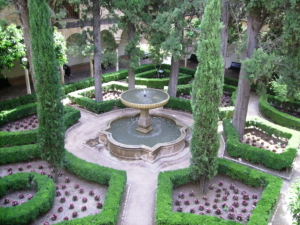
Granada in Spring time offers a fantastic time to visit the great Alhambra and the gardens, which will be bursting with color, all the way to the Generalife – the summer palace of the Kings of Granada. Walk over to the Albaicin and Sacromonte for fantastic views of the Alhambra and the surrounding mountains.
Saunter around Seville, getting lost in the picturesque narrow streets of the Barrio Santa Cruz, breathe in the scent of the famous Seville oranges (the trees flower in Spring) and visit the grandiose Cathedral to take in the spectacular views from La Giralda. Join the tapas hopping culture of this great city as foodie hotspots offer their fresh-out-of-the-kitchen plates. Seville boasts more than 4,000 tapas bars – roughly 1 for every 200 locals so you know they know what they’re talking about!
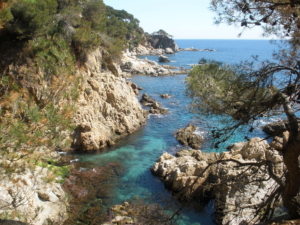
Breathe in the Mediterranean air, in Calella de Palafrugell, as you walk along the miles of coast path that line the wild Costa Brava coast. Enjoy a short walk to discover some hidden coves or maybe a longer route, on the meandering clifftop path, to enjoy the wildness (in less common parts the path is quite wild). Calella de Palafrugell to Llafranc is a delightful, easy walk and a glass of wine on a sea front terrace at the end can be your reward! What’s for sure is you will be at one with nature and feel as free as the sea air.
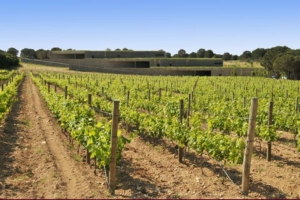
The Wine Regions of Spain will gradually be getting their grapes and, depending on the time you go, the vines in Spring in Spain will be sprouting or full of leaves. Join us on a wine tour of Spain to enjoy private winery visits to our hand-selected vineyards and exclusive wine tasting! Ribera del Duero, Priorat, Penedès, Empordà, La Rioja …… will all be waiting, expectant of your comments on their wines as you taste their best!
These are just a few of the many places in Spain that you could be visiting on one of our Food, Wine and Cultural Tours in Springtime, but there’s so very much more! And, not to forget Portugal and South West France that too are eager to welcome you into their hearts and their lives!!
Contact us for a personalized quote of your perfect private tour of Spain, Portugal and/or SW France.
Last year we customized a number of tours around cruises of Portugal and Spain, starting in Lisbon and finishing in Barcelona, for our clients using companies such as Azamara Club Cruises and Paul Gauguin Cruises, amongst others. Here are some ideas to inspire you for your next trip…. Read more
About
Gourmand Breaks is a Spanish Registered and Fully Bonded Tour Operator GC 1627, inscribed in the Commercial Register of Girona on 17 of May 1996, VAT number ESB61124814

